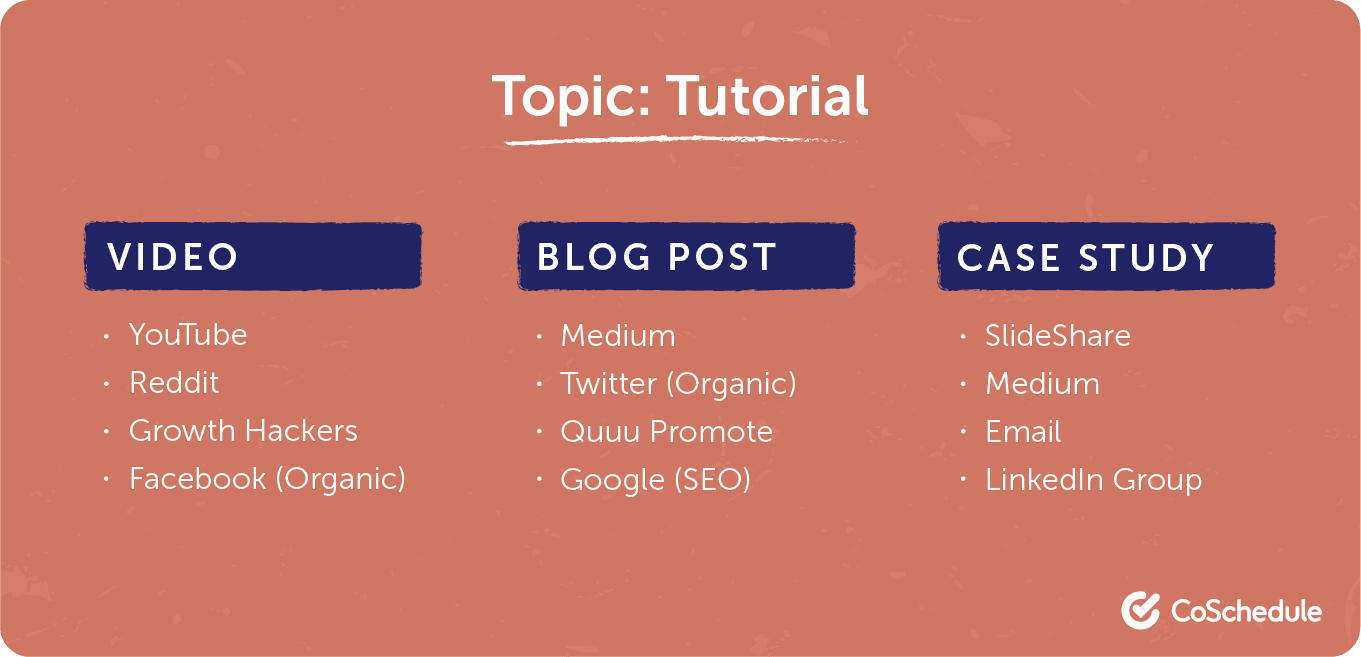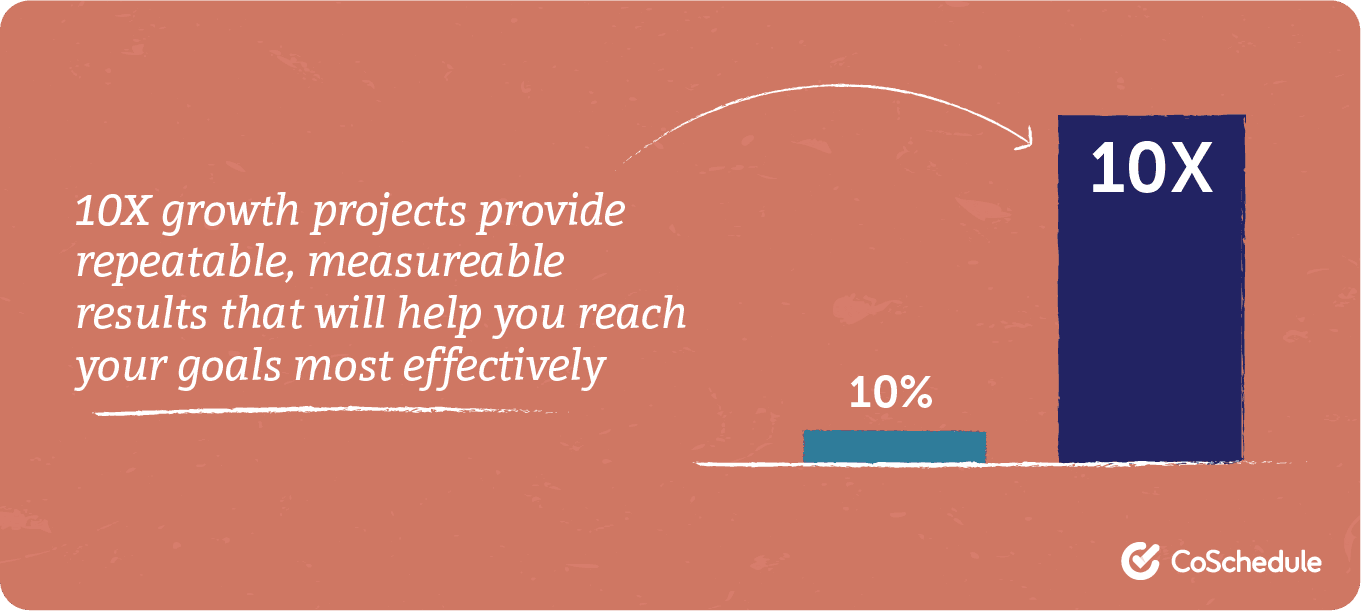Discover the concrete steps when creating your brand new content strategy and learn how to execute those steps to skyrocket growth. By the end, you’ll have mastered the content strategy process and promised your business a bright future.
In this guide, we’ll walk you through creating, executing, and measuring an effective content strategy. Plus, you’ll get access to a free content strategy template to help you get started. By the end, with the help of the content template, you’ll have mastered the content strategy process and promised your business a bright future.
Content strategy is the process where the final goal is publishing effective content.
It’s important to note that “effective content” is relative to your own north star metric. That could be more traffic, a rush of email sign-ups, or more revenue from your products.
When we refer to content strategy, it’s the whole act of planning, creating, and optimizing content that helps work towards your business goals.
Creating a content marketing strategy is vital to the success of your overall content marketing.
We’ve found that marketers who document their strategy are 538% more likely to report success.
This is because it gives your content team a way to measure success (and failures) and stick to the plan you’ve designed.
Having a solid content strategy in place ensures you know the reason behind your content efforts and the goals you want to achieve. You’re not just hitting “publish” and hoping for the best.
A strong content strategy also guarantees the best traction with your target audience. No more second-guessing what your audience wants.
Recommended reading: 16 Content Marketing Metrics: A Guide To Adopt Successful KPIs
One Content Strategy Template to Document Your Entire Plan
Unsure how to start your content strategy? Don’t panic.
We won’t just tell you what to do, we’ll actually show you how to document your content marketing strategy using our content strategy template.
Download the template below, and then we’ll move on to planning your content strategy.
How to Plan Your Content Strategy Template
You have your free content strategy template. Now, let’s use these eight steps to get the content template ready to work.
Recommended: Weekly Content Plan Generator
1. Determine Business Objectives Content Marketing Will Help Achieve
Kicking off any marketing strategy starts with a solid understanding of what you want to get out of it. You physically can’t run a campaign without setting an objective for it.
If your potential business objective is to generate revenue from new customers, you need to figure out how to drive target customers to your website.
Content is your ammunition. Small snippets of information posted all over the internet can raise brand awareness and drive brand new people to your website.

Let’s fast forward:
You’ve got the customers. How do you get the recurring revenue?
Again, content is your main tool. You can create a lifecycle marketing strategy that focuses on the end of the marketing funnel.
It doesn’t matter which objective you’re pushing hard for. As long as it’s relevant to your business’s bottom line, it’s a goal that should be guiding the rest of your content strategy.
2. Identify Your Target Audience
Creating powerful content is only effective when it hits your target audience.
Distinguish specifically what type of audience you’re working to connect with so strategists can determine what types of topics, ideas, and keywords you should cover. It’ll also be your guiding light for content promotion.
When targeting customers, your priority is to reach your primary audience. These are the people that are most likely to buy your product or use your services.
Here’s an example of a primary audience:
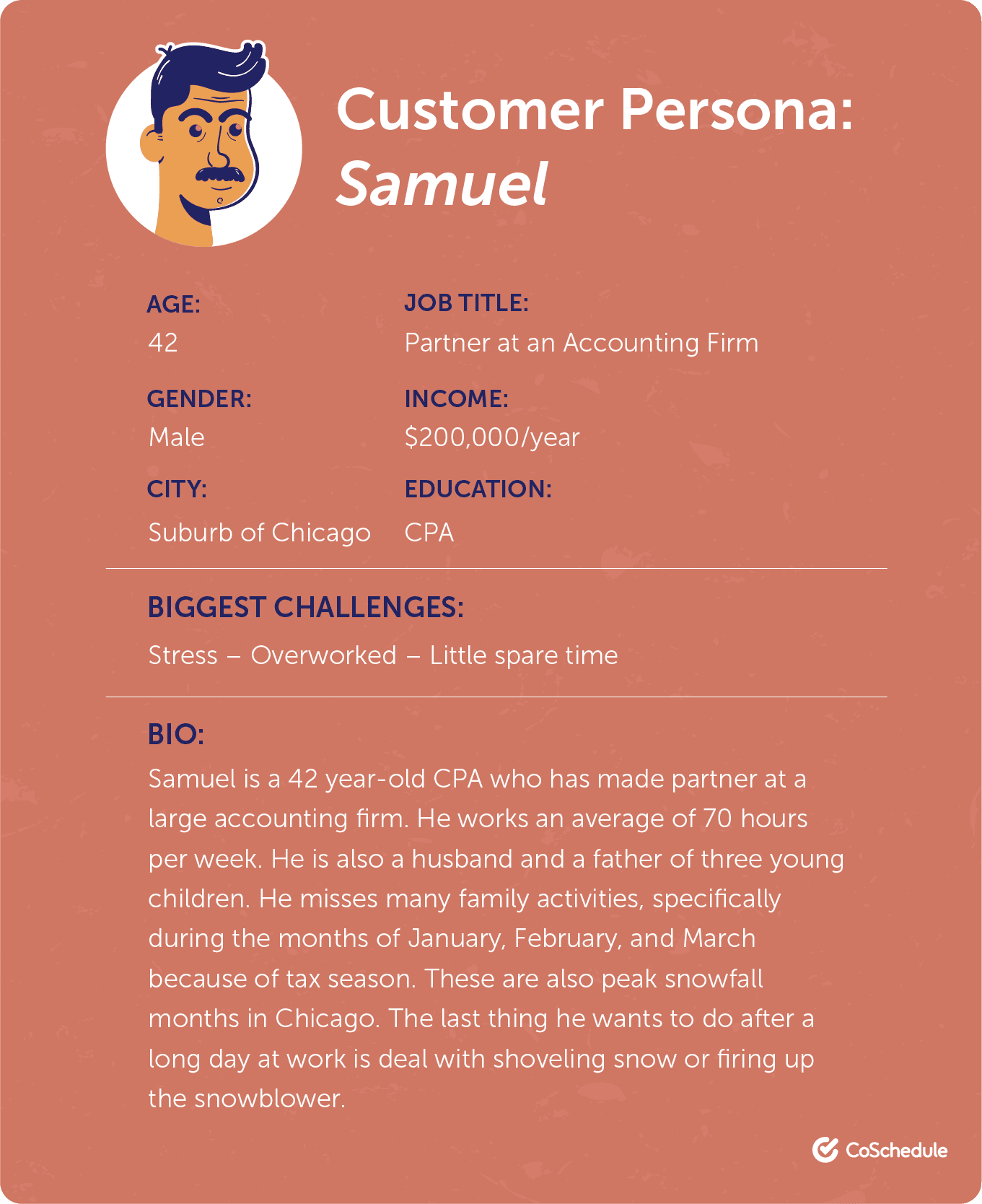
Your secondary audience are those who need more convincing content to become a customer. Your team will need to be more strategic in what they create for this particular group.
Do this by sending a survey to your audience using Survey Monkey, Typeform, or Google Forms.
3. Determine Your 10x Content Core
The next step is to develop your content core — the topics that are most closely related to your product.
Start by identifying broad topical pillars, then build off those bigger questions. Practice by asking yourself, What questions do my customers tend to have? What problems do my products solve? What does my audience want to learn/use next?
4. Select Your Content Formats & Channels
You should have some idea of the channels you should be using in your content strategy from the audience personas we created earlier.
Potential channels may include a mixture of:
- Blog posts
- Email newsletters
- Videos
- Social media content
- Print materials (magazines, brochures, etc.)
- eBooks and white papers
- Research reports
- Case studies
- Visual content (infographics)
The formats you’re using massively impact the channels you’ll use to promote said content. There’s no point in getting this far and creating insanely valuable content if nobody will see it.
You can create a content distribution plan based on actual data. Scan the channels your audience is using and look at the content format shared most often.
The end result is a handy guide to show which formats and channels to use — based on your content topic.
5. Establish A Basic Publishing Schedule
Developing a regular posting schedule creates consistency which is essential to building an audience. If they know you post new content every week, they’ll come back weekly to read it.
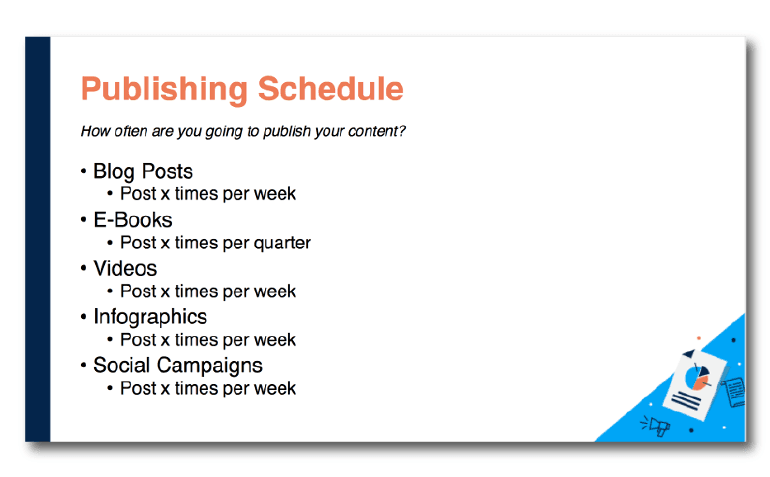
The next part of your content process is developing your marketing calendar. These calendars will help keep your writers on track by letting them plan all your content based on your decided frequency.
Recommended Reading: Content Calendar Template
Each piece of content you want to publish should be on your calendar and include:
- The date it publishes
- The topic it covers
- The core content pillar it falls under
- The content format you’ll create
- The channels you’ll use to distribute your content
You can record this in your content strategy template:
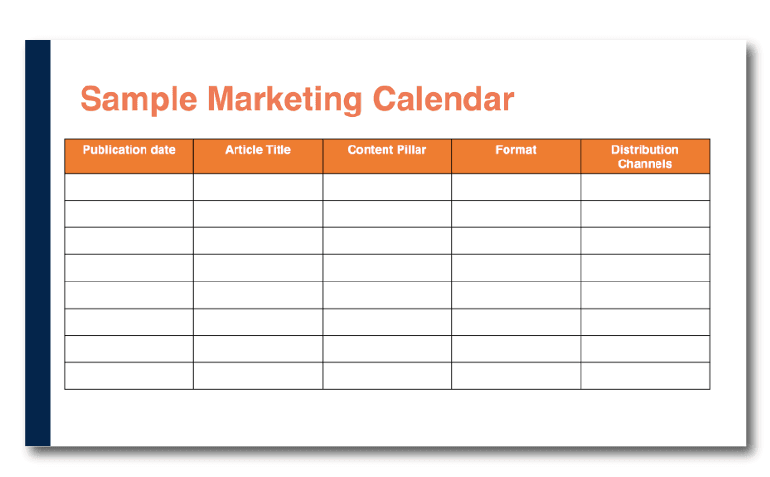
6. Set Your Standards of Performance
Every piece of external content you release to the world should meet basic standards.
Standards of performance help accomplish this. It’s a set of guidelines you must meet before hitting “publish.”
These standards come in different shapes and forms; perhaps they are values your business carries through its work, or they could be rules you follow concerning format/grammar (how you address your audience).
The bottom line: your standards of performance are things you refuse to budge on. Setting high expectations (standards of performance) ensures you’re publishing only high-quality pieces that you’re proud of.
7. Include Teammates In The Editorial Process
Keep your project moving efficiently by carefully selecting team members for the content process, quickening publish speed.
Your content team likely consists of these people:
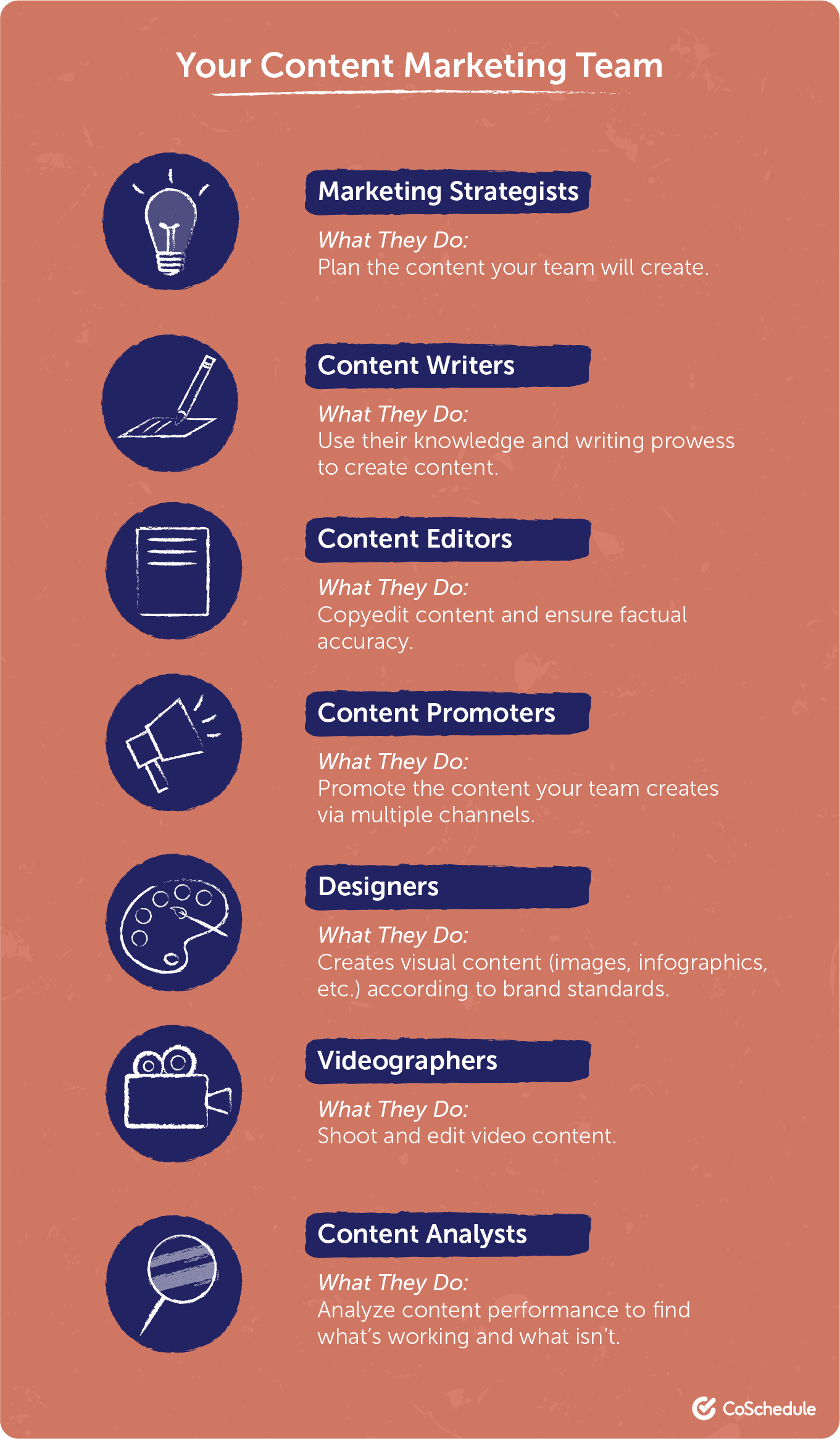
Each member of your content team has a vital role to play. Make a list of the people on your team, their roles, and what they do.
Add this into your content strategy template, so you’re clear on who does what from the get-go.
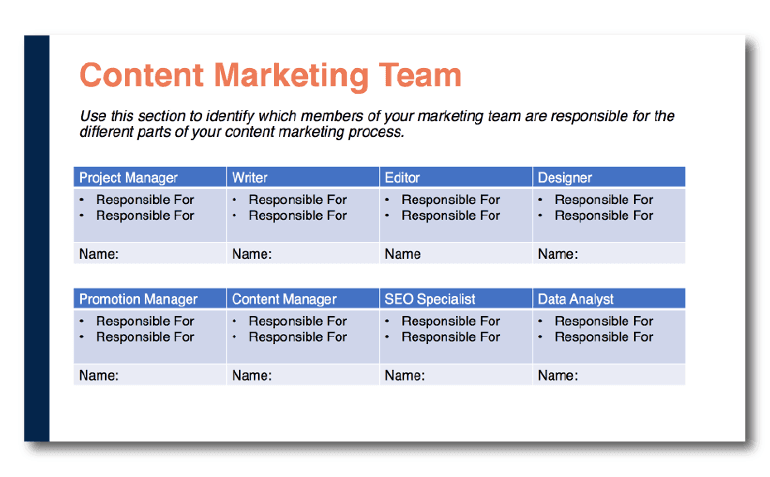
8. Develop Content Workflows & Processes
Content strategy isn’t a one-and-done thing; you need to build workflows that help you do the same processes repeatedly, without hesitation.
These systems will help your team understand the process from start to finish. You can break up the content into tasks that you can delegate to various team members. From there, assign due dates to your tasks so you’re hitting every deadline with ease.
With repeating processes, such as blog posts or creating videos, create a task-based workflow of what you need to complete and assign the person who does it. Use that as your template when you need to repeat the project again.
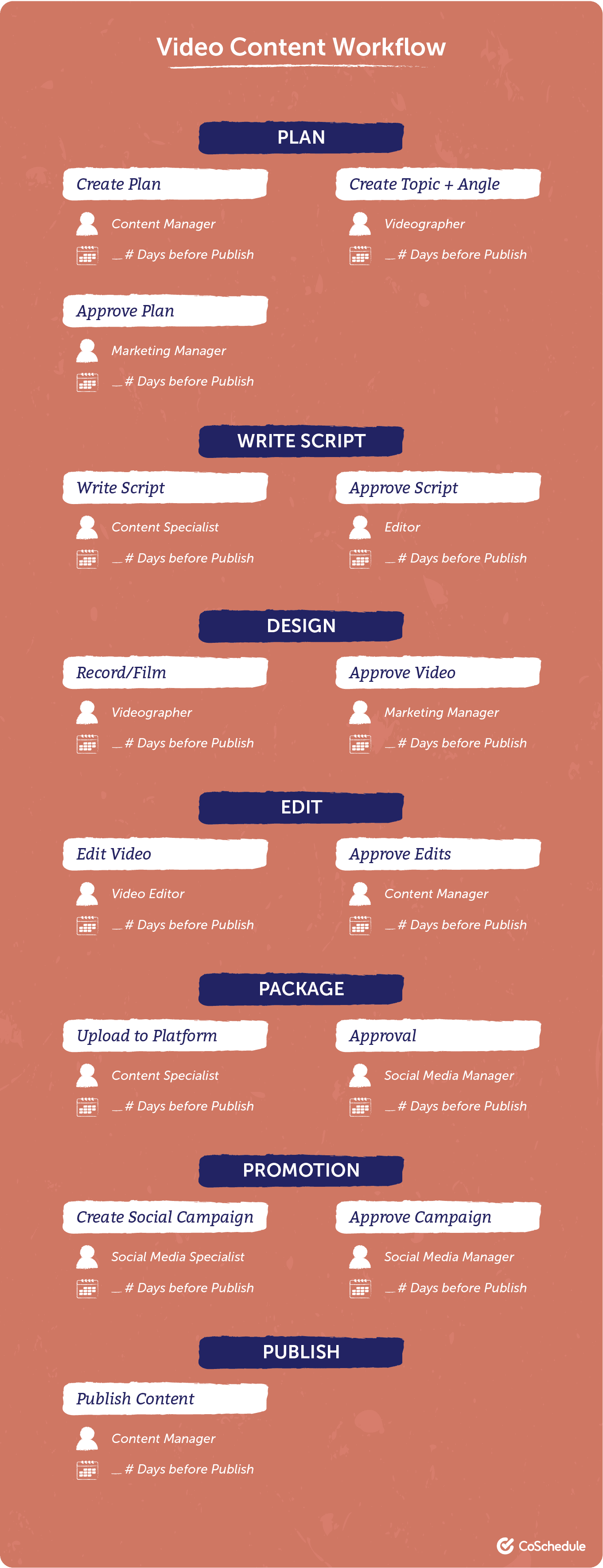
Similarly, have a process for editorial ideas. Gathering input from your entire team helps you cherry-pick the best content ideas, but it’s hard to control them when ideas are whizzing around in your inbox.
Use CoSchedule’s Marketing Calendar Idea Board to pull them into one place:
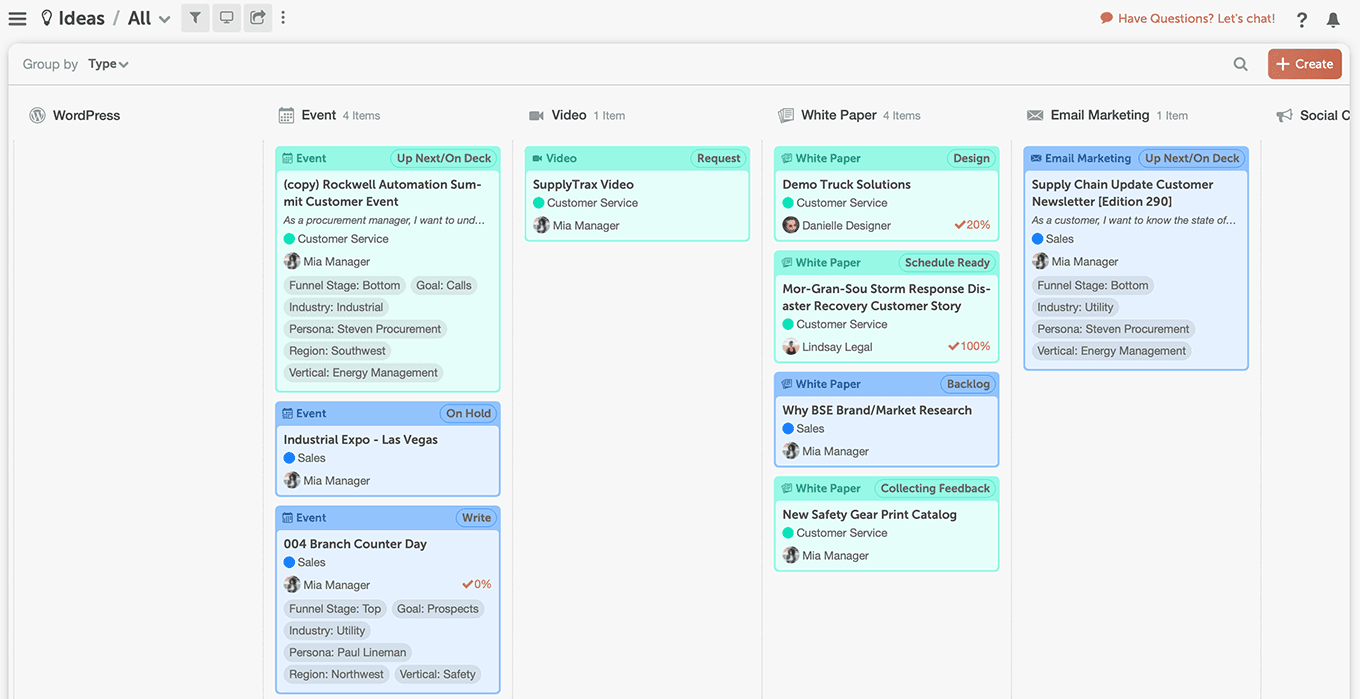
This is arguably the best method for focusing your efforts on the most effective work — something the stakeholders should appreciate when it comes to pitching your strategy to them.
By this point, you’ve got a solid content strategy detailing everything you’re about to do.
You still need to plan how to execute your strategy before hitting “launch” on your new content.
Make Use Of Creative Briefs
Think of the creative brief as a guide for your team to help understand the piece of content before you create it, promoting smooth collaboration throughout the entire project.
It helps you plan your work, then work your plan.
The most important thing to include in a content brief is answering “What’s in it for me?”
That’s the question your readers, listeners, or watchers ask every time you publish a piece of content. They’re thinking, “Is it worth my valuable time to check this out?” If the answer is no, they won’t read, listen, or watch. You don’t stand a chance at meeting your content goals.
Get this right by understanding the keywords your audience uses when searching for solutions to their problems. By taking the time and effort to listen to your audience you’ll be able to provide them with the answers they need and ultimately answer their burning question: “What’s in it for me?”
Get Approval From Stakeholders
When meeting with potential stakeholders, run through reviews on ideas, creative briefs, and team workload, covering all bases, and explaining your “why” within each step.
There is a right time to include stakeholders. It’s best to try to involve the stakeholders early on and get approval before you begin executing your content plan.
Here’s why:
In the book, “Linchpin: Are You Indispensable?” by Seth Godin, he mentions the importance of involving stakeholders early on in a project, as opposed to later, in order to publish (ship) your work in time. Godin states,
“What’s the point of getting involved early when you can’t see what’s already done and your work will probably be redone anyway? The point of getting everyone involved early is simple: thrash late and you won’t ship.”
Godin reveals the risks that come along with late approval. Show your stakeholders your content plan, get approval before you begin executing, then publish that content on time. It’s that simple.
This book, by business executive Seth Godin, doesn’t just serve as killer career advice, (a book I highly recommend anyone should read) but it’s actually become a tradition to read it and give a book report here at CoSchedule. On top of a bonding experience and harnessing a consistent culture, discover if a company-wide book report can provide the same benefits for you as it does for us.
Analyze Your Data
You have approval to start shipping.
To analyze your data ultimately means asking yourself: Which specific pieces of content are contributing the most and least to my goal?
When you analyze your data it will help you understand what types of content to replicate in the future and which to avoid. Once you’re able to accurately analyze your data, you’ll be able to decipher between the content that halts progress and the content that promotes growth.
Here are several things you can analyze from both your best and worst-performing content to help you get bigger results from your future content:
- Who wrote the content?
- What type of content was it?
- What additional media was in the content?
- What’s the most popular subject matter?
You get the idea.
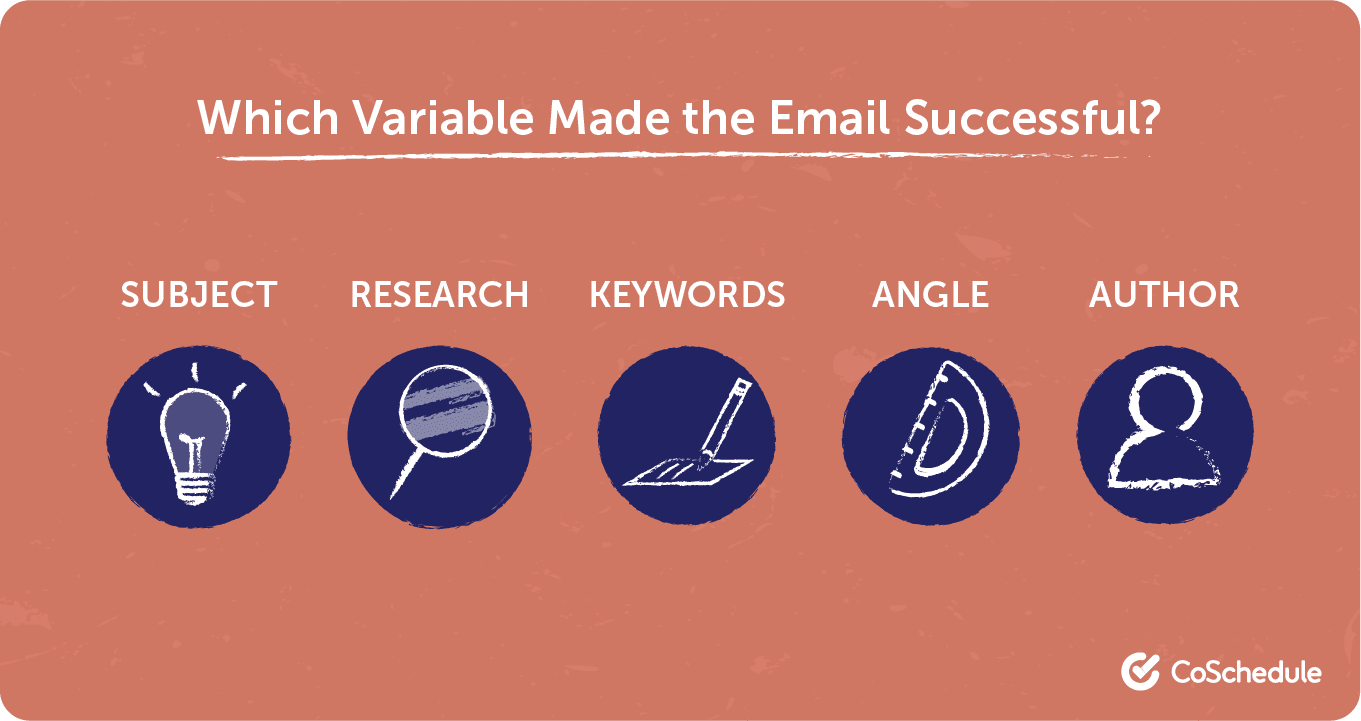
Before we move on, I’ll leave you with one final framework: 10x versus 10%.
What ideas will help you grow your results ten times over, instead of just making a ten percent improvement?
The more you understand the results your content produces, the more effective content you will create. You don’t need to reinvent the wheel, you just need to make it better. Keep doing what you know works extremely well until the fuel runs dry.
Define Your Monthly Goals for the Next Six Months
Remember, if content strategy is new in your business, stakeholders might still need convincing that it’s worth investing in long-term. Do that by rolling up your data to understand what your overarching monthly goals should be.
This will help you understand the larger impact of publishing effective content.
Next, determine how many times you’ll publish your improved content every month, turning out consistent content that boosts results.
Is your head spinning with numbers? Don’t panic.
The spreadsheet in your content strategy template has formulas built into it, so you don’t have to figure it out yourself.
Congratulations! You’re now equipped with all the tools needed to pursue a successful content strategy.
To kickstart your brand new content strategy, CoSchedules can help you hit the ground running, transforming your content plans into published pieces. Your team will collaborate more effectively, work more efficiently, and hit every deadline.
